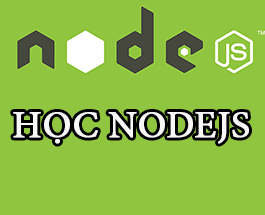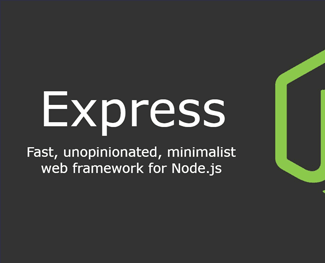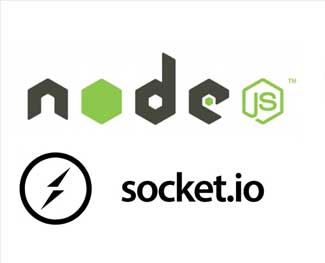Populate trong Mongoose
Trong bài viết này chúng ta sẽ cùng nhau đi tìm hiểu về Populdate trong Mongoose.

Trong phiên bản từ 3.2 trở đi Mongose có hỗ trợ một aggregation operator hỗ trợ việc join các document có mối liên hệ với nhau là lockup. Nhưng phổ biến và mạnh mẽ hơn đó chính là populate(), cho phép bạn join các document từ các collections khác.
Populate là quá quá trình tự động thay thế các paths trong documents gốc bằng cách documents trong các documents khác. Chúng ta có thể gộp một hay nhiều document, objects hay tất cả object từ một query. Bên dưới là ví dụ cụ thể:
const mongoose = require('mongoose');
const Schema = mongoose.Schema;
const personSchema = Schema({
_id: Schema.Types.ObjectId,
name: String,
age: Number,
stories: [{ type: Schema.Types.ObjectId, ref: 'Story' }]
});
const storySchema = Schema({
author: { type: Schema.Types.ObjectId, ref: 'Person' },
title: String,
fans: [{ type: Schema.Types.ObjectId, ref: 'Person' }]
});
const Story = mongoose.model('Story', storySchema);
const Person = mongoose.model('Person', personSchema);Bên trên chúng ta có đã khởi tạo 2 Models. Person sẽ có một trường lưu trữ stories là một array ObjectID. Thuộc tính ref được sử dụng để cho Mongoose biết rằng trường này được join đến model nào, trong trường hợp này là model Story. Tất cả _ids mà chúng ta lưu trữ phải là _ids của một document trong Story model.
Bài viết này được đăng tại [free tuts .net]
Chú ý: ObjectId, Number, String, và Buffer đều sử dụng được options ref. Tuy nhiên bạn nên sử dụng ObjectID ngoại trư trường hợp đặc biệt.
1. Lưu một refs
Bên trên chúng ta đã khởi tạo 2 Model, bây giờ mình sẽ thêm vào Person một document và đồng nghĩa với nó mình cũng thêm một document trong Story.
const author = new Person({
_id: new mongoose.Types.ObjectId(),
name: 'Nguyễ Du',
age: 0
});
author.save(function (err) {
if (err) return handleError(err);
const story1 = new Story({
title: 'Truyện Kiều',
author: author._id // Lấy giá trị của ._id cho refs
});
story1.save(function (err) {
if (err) return handleError(err);
//Lưu thành công !!!
});
});2. Population
Tiếp theo, sau khi thêm một refs bạn có thể thực hiện gộp documents trong Story vào Person quá trình này gọi là populate, cũng gần tương tự như join trong MySQL. Bên dưới mình có ví dụ cụ thể :
Story.
findOne({ title: 'Truyện Kiều' }).
populate('author').
exec(function (err, story) {
if (err) return handleError(err);
console.log('Tác giả %s', story.author.name);
// prints "Tác giả Nguyễn Du"
});Tùy chọn các trường
Chúng ta cũng có thể tùy chỉnh các trường được trả về để tiết kiệm tài nguyên, ví dụ bên dưới mình sẽ chỉ trả về giá trị author.name mà thôi.
Story.
findOne({ title: 'Truyện Kiều' }).
populate('author', 'name'). // Chỉ trả về Person name
exec(function (err, story) {
if (err) return handleError(err);
console.log('Tác giả : %s', story.author.name);
// prints "Tác giả : Nguyễn Du"
console.log('Tuổi %s', story.author.age);
// prints "Tuổi : null'
});Populate với nhiều Paths
Ngoài ra, chúng ta còn có thể populate với nhiều path khác nhau bằng cú pháp sau:
Story.
find(...).
populate('fans').
populate('author').
exec();Thêm điều kiện truy vấn
Bạn có thể thêm điều kiện truy vấn, trong ví dụ trên mình sẽ truy vấn fans dựa vào tuổi lớn hơn 50:
Story.
find(...).
populate({
path: 'fans',
match: { age: { $gte: 50 } },
select: 'name -_id'
}).
exec();Ngoài ra populate còn hỗ trợ giới hạn các document, thêm object options như ví dụ:
const stories = Story.find().sort({ name: 1 }).populate({
path: 'fans',
options: { limit: 2 } //giới hạn các document
});
stories[0].fans.length; // 2
stories[1].fans.length; // 0Nếu bạn muốn giới hạn trong mỗi document thì bạn có thể sử dụng perDocumentLimit :
const stories = await Story.find().sort({ name: 1 }).populate({
path: 'fans',
perDocumentLimit: 2
});
stories[0].fans.length; // 2
stories[1].fans.length; // 2Populate với nhiều cấp
Ở đây mình có một Model như sau:
var userSchema = new Schema({
name: String,
friends: [{ type: ObjectId, ref: 'User' }]
});Giả sử bạn muốn lấy tất cả bạn bè của một người nào đó, rồi lại lấy bạn bè của những người vừa lấy được =))) Chúng ta sẽ sử dụng cú pháp sau:
User.
findOne({ name: 'Val' }).
populate({
path: 'friends',
// Get friends of friends - populate the 'friends' array for every friend
populate: { path: 'friends' }
});refPath
Mongoose cũng có thể populate từ nhiều collections khác nhau dựa trên giá trị của thuộc tính trong document. Giả sử bạn đang xây dựng một Schema để lưu trữ bình luận. Người dùng có thể comment về bài đăng trên Blog hoặc Sản phẩm
const commentSchema = new Schema({
body: { type: String, required: true },
on: {
type: Schema.Types.ObjectId,
required: true,
refPath: 'onModel'
},
onModel: {
type: String,
required: true,
enum: ['BlogPost', 'Product']
}
});
const Product = mongoose.model('Product', new Schema({ name: String }));
const BlogPost = mongoose.model('BlogPost', new Schema({ title: String }));
const Comment = mongoose.model('Comment', commentSchema);Lúc này khi lưu một comment bạn chỉ cần chọn Model mà bạn muốn dùng để populate :
const book = await Product.create({ name: 'Freetuts });
const post = await BlogPost.create({ title: 'Lập trình NodeJS' });
const commentOnBook = await Comment.create({
body: 'Sách hay',
on: book._id,
onModel: 'Product'
});
const commentOnPost = await Comment.create({
body: 'Thông tin rất hữu ích',
on: post._id,
onModel: 'BlogPost'
});
const comments = await Comment.find().populate('on').sort({ body: 1 });
comments[0].on.name; // "Freetuts"
comments[1].on.title; // "Lập trình NodeJS"Populate trong Middleware
Tham khảo thêm bài viết về Middleware. Bạn có thể thực hiện thao tác populate trong pre và posts hooks. Chúng ta có một vài ví dụ :
// Thường dùng `populate()` khi `find()` được gọi
MySchema.pre('find', function() {
this.populate('user');
});
// Thường gọi `populate()` sau khi `find()` được gọi.
// Rât hữu ích trong trường hợp bạn muốn populate sau khi tìm được documents
MySchema.post('find', async function(docs) {
for (let doc of docs) {
if (doc.isPublic) {
await doc.populate('user').execPopulate();
}
}
});
// `populate()` sau khi save.
// Hưu ích cho việc gửi populate về API
MySchema.post('save', function(doc, next) {
doc.populate('user').execPopulate().then(function() {
next();
});
});Trên đây là những kiến thức cơ bản về Populate trong Mongoose. Mong bài viết này có thể giúp ích cho bạn cho việc lập trình với NodeJS, cảm ơn bạn đã quan tâm bài viết này.

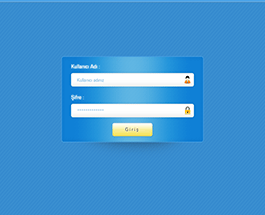 Xây dựng chức năng đăng nhập và đăng ký với php và mysql
Xây dựng chức năng đăng nhập và đăng ký với php và mysql  Bảng mã ASCII chuẩn các hệ nhị phân - thập phân - thập lục phân
Bảng mã ASCII chuẩn các hệ nhị phân - thập phân - thập lục phân  Cách khai báo biến trong PHP, các loại biến thường gặp
Cách khai báo biến trong PHP, các loại biến thường gặp 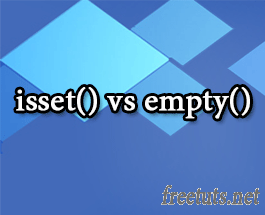 Bài 26: Hàm isset() và empty() trong php
Bài 26: Hàm isset() và empty() trong php  Các kiểu dữ liệu trong PHP và các loại biến tương ứng
Các kiểu dữ liệu trong PHP và các loại biến tương ứng  Bài 19: Phương thức GET và POST trong php
Bài 19: Phương thức GET và POST trong php  Download và cài đặt Vertrigo Server
Download và cài đặt Vertrigo Server  Bài 20: Các hàm xử lý chuỗi trong php
Bài 20: Các hàm xử lý chuỗi trong php 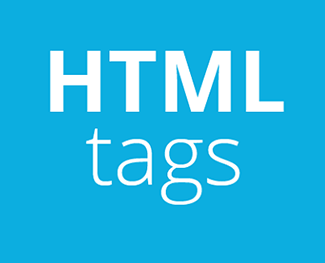 Thẻ li trong HTML
Thẻ li trong HTML 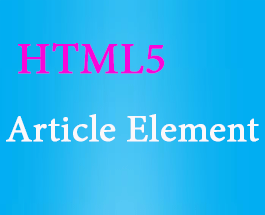 Thẻ article trong HTML5
Thẻ article trong HTML5 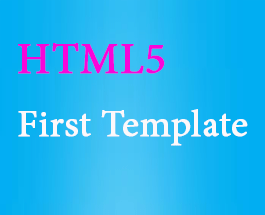 Cấu trúc HTML5: Cách tạo template HTML5 đầu tiên
Cấu trúc HTML5: Cách tạo template HTML5 đầu tiên 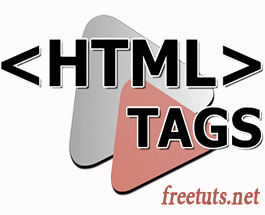 Cách dùng thẻ img trong HTML và các thuộc tính của img
Cách dùng thẻ img trong HTML và các thuộc tính của img  Thẻ a trong HTML và các thuộc tính của thẻ a thường dùng
Thẻ a trong HTML và các thuộc tính của thẻ a thường dùng 